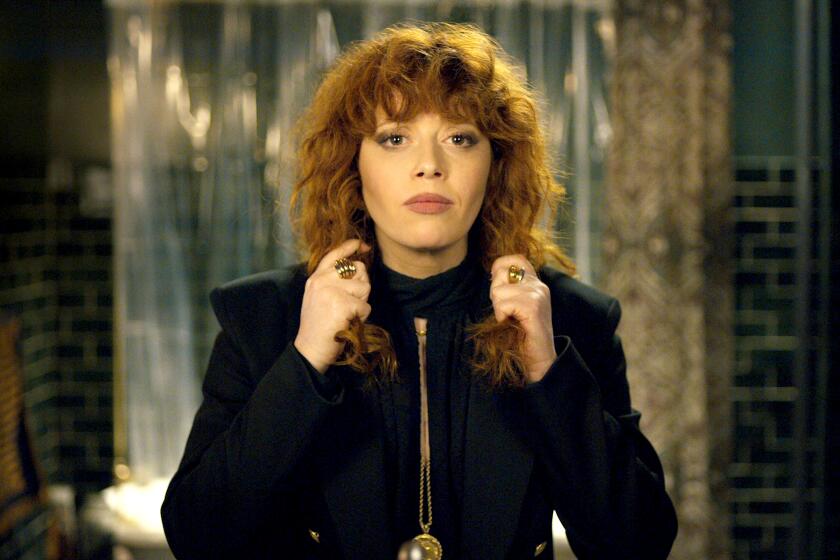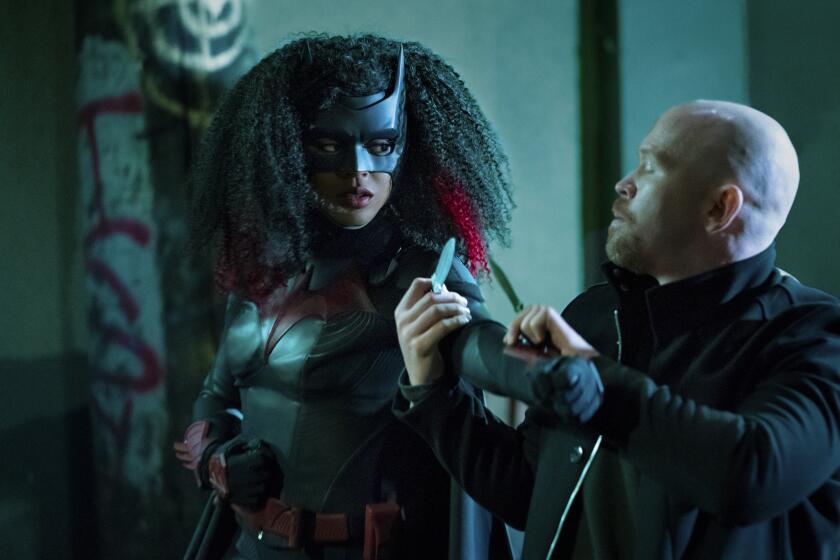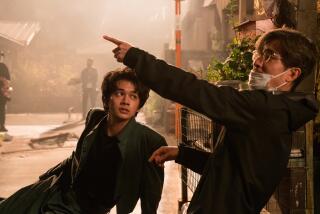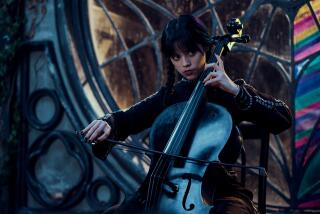Netflix’s ‘Cowboy Bebop’ made big changes to the original. Its makers explain why
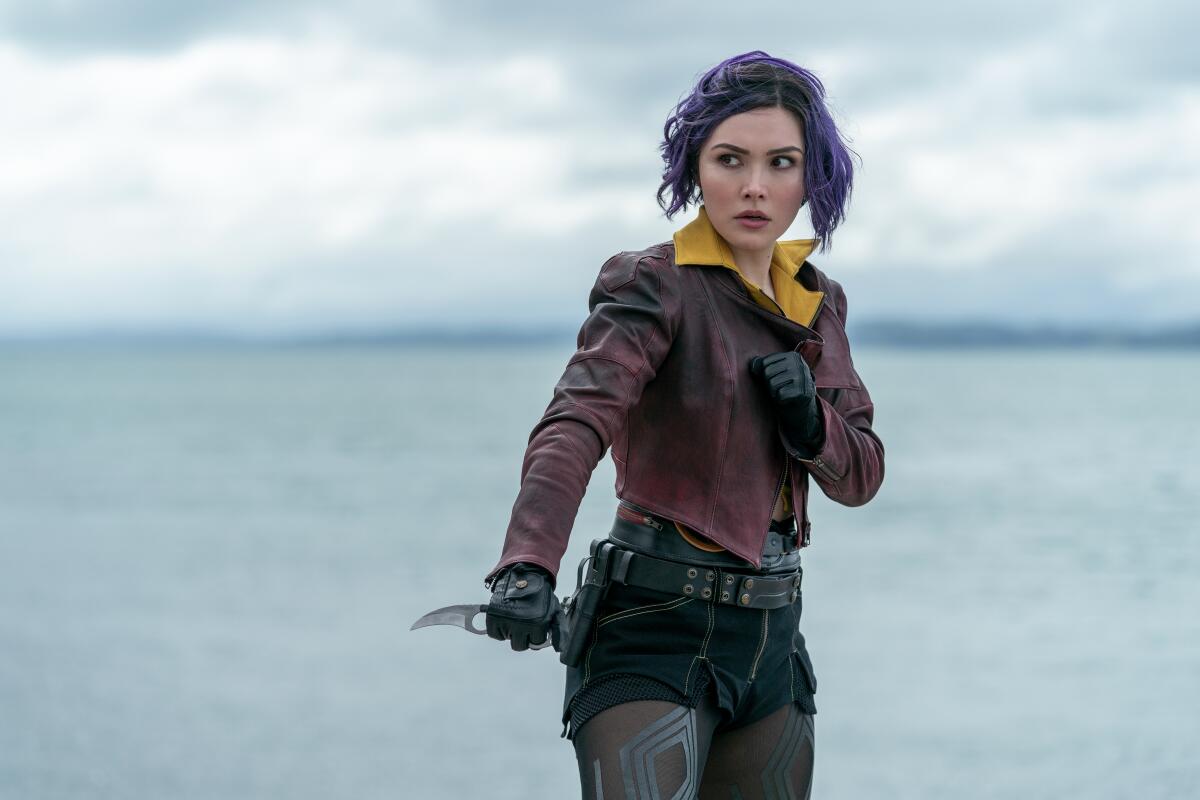
“It’s ‘Cowboy Bebop,’ let’s not f— this up.”
That was the guiding mantra for showrunner and executive producer André Nemec and the cast and crew of Netflix’s live-action adaptation of the beloved anime series, which hit the streamer Friday.
Set in the not-too-distant future after humans have had to colonize other planets and moons within the solar system, “Cowboy Bebop” follows a misfit crew of bounty hunters who operate out of the spaceship Bebop. This includes the ship’s hard-working captain, Jet Black (Mustafa Shakir), his laid-back partner with a mysterious past, Spike Spiegel (John Cho), and — eventually — the scrappy and determined Faye Valentine (Daniella Pineda).
“I knew we were treading on hallowed ground,” said Nemec during a recent video call. “Spike, Jet, Faye, Vicious, Julia — they’re such delicious characters in the anime. … This felt like a great opportunity to mine their stories and to answer some of the things that I felt in the poetry that was the anime. To dig into a deeper narrative in places for these characters.”
We surveyed The Times TV team to come up with a list of the 75 best TV shows you can watch on Netflix. As in, tonight.
For Nemec and his team “it was always about honoring the spirit of the anime,” but that does not mean the live-action “Cowboy Bebop” series simply repeats the story told in the original.
Instead, the 10-episode adaptation blends spot-on callbacks of moments from the anime with both subtle and substantial narrative changes — most noticeably around the show’s women, Faye and Julia (Elena Satine) — that allow the series to stand on its own.

Debuting in 1998, the original “Cowboy Bebop” is a seminal anime often credited with helping expand the scope and reach of Japanese animation with its memorable characters, deep themes and genre-bending storytelling. But as influential as the series may be, it is a product of its time, so certain portrayals, including Faye and Julia’s, were ripe for updates.
Still, “anything that you choose to try to do differently from an original beloved piece of IP, there is a lot of terror and night sweats and sleepless nights involved,” said executive producer Becky Clements of Tomorrow Studios.
In the anime, Faye is a brash and skilled bounty hunter searching for her past. She has no memory of her life prior to the 50 years she spent cryogenically frozen, and for the most part, this backstory remains intact in the new adaptation.
For Nemec and the writers, the first step in plotting Faye’s arc was figuring out “what it is about Faye [in the anime] that we love about Faye.”
A reaction to the damsel in distress, the ‘badass woman’ became a trope of her own. From ‘Batwoman’ to ‘Black Widow,’ Hollywood is looking past it.
“To me it’s that she has the soul of a survivor,” said Nemec. “She’s scrappy, she’s wily, she’s quick, she’s vulnerable. She’s a survivor. She’s chasing her own history and her own past, and while it burdens her, it doesn’t stop her.”
He explained that the adjustments to Faye’s story were made so she not only felt as empowered as she did in the anime, but also so that empowerment developed into greater agency.
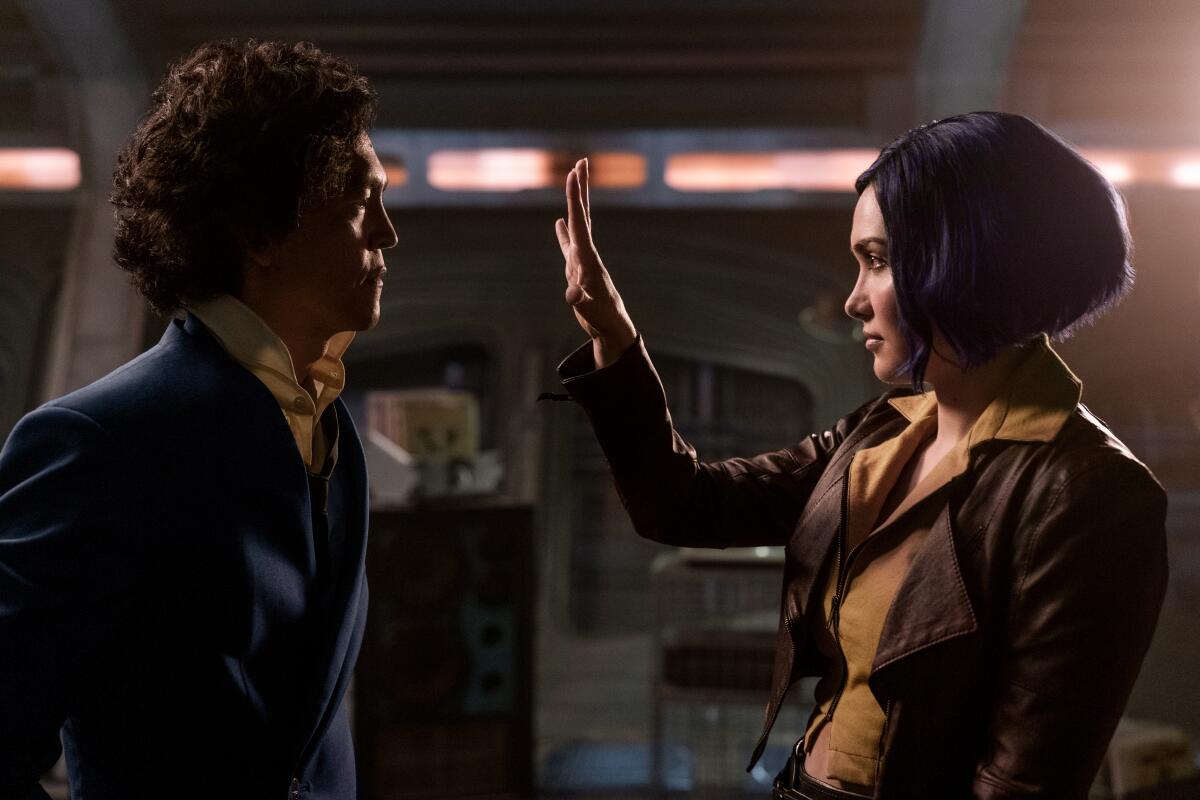
Part of Faye’s anime backstory involves her being romanced by a con man who fakes his death to saddle her with his insurmountable debts. But the scammer is entirely reimagined for the live-action series, which, among other things, results in this romantic element being completely excised from live-action Faye’s past.
And when a mechanic propositions her in an episode of the new series, their tryst is not part of a scheme. It’s an experience Faye chooses, one that contributes to the process of figuring out who she is.
Nemec and his team also were sensitive to instances in the anime where women, including Faye and Julia, were essentially reduced to dramatic devices to further the story of the male characters.
This was particularly significant for Julia, who in the anime mostly serves as a specter from Spike’s past, appearing only as flashes in his memory until the final episodes. She is a much larger presence in the live-action adaptation, which addresses her, Spike and Vicious’ (Alex Hassell) shared past more clearly.
Julia “was the hardest character to get our claws into as storytellers,” said Nemec. “There was so much whole cloth that we were building, [but] we didn’t want this to be just this full-time departure” from the anime.
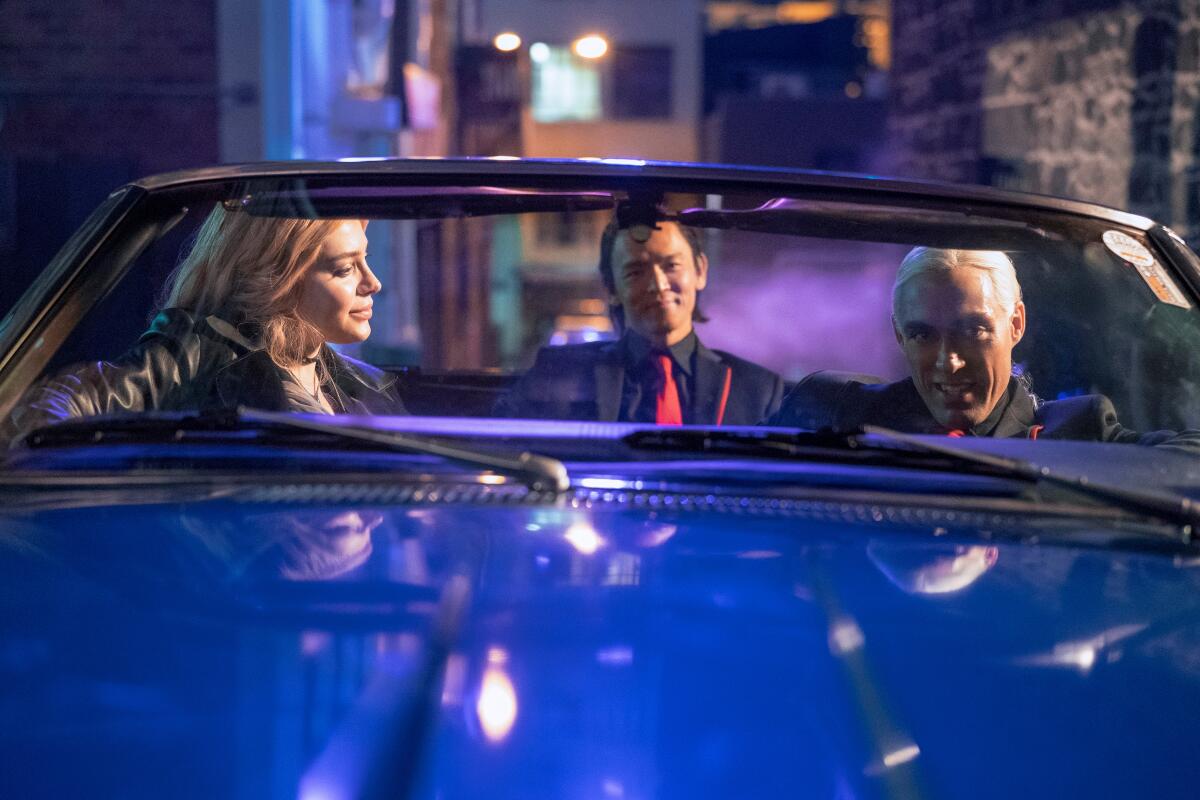
As in the anime, the live-action Julia is caught between Spike, Vicious and the world of their criminal syndicate. But Nemec knew her story had to be more than just being the woman at the center of Spike and Vicious’ rivalry.
“I always knew we wanted to start in a place where Julia and Vicious were together, but Julia was a bit of a caged bird,” said Nemec. And we knew “Julia must free herself from her own cage … through her own cunning, through her own wit, through her own smarts, through her own charms.”
Julia’s journey is one of the most significant differences between the new “Cowboy Bebop” and the original anime series. But her story, as well as Faye’s, better reflects the kind of storytelling around women that audiences have come to expect.
“Tomorrow Studios, we produce a lot of shows,” said Clements. “‘Physical’ with Rose Byrne, and Jennifer Connelly in ‘Snowpiercer,’ and ‘Hanna,’ which we did with Amazon — we have a lot of female protagonists who don’t fit into one box. They are multidimensional, developed characters. André and the writers and all of us spent a lot of time, keeping some of the backstory, but creating a new journey for [‘Cowboy Bebop’s’] female characters that we felt was appropriate for our adaptation and appropriate for audiences today.”
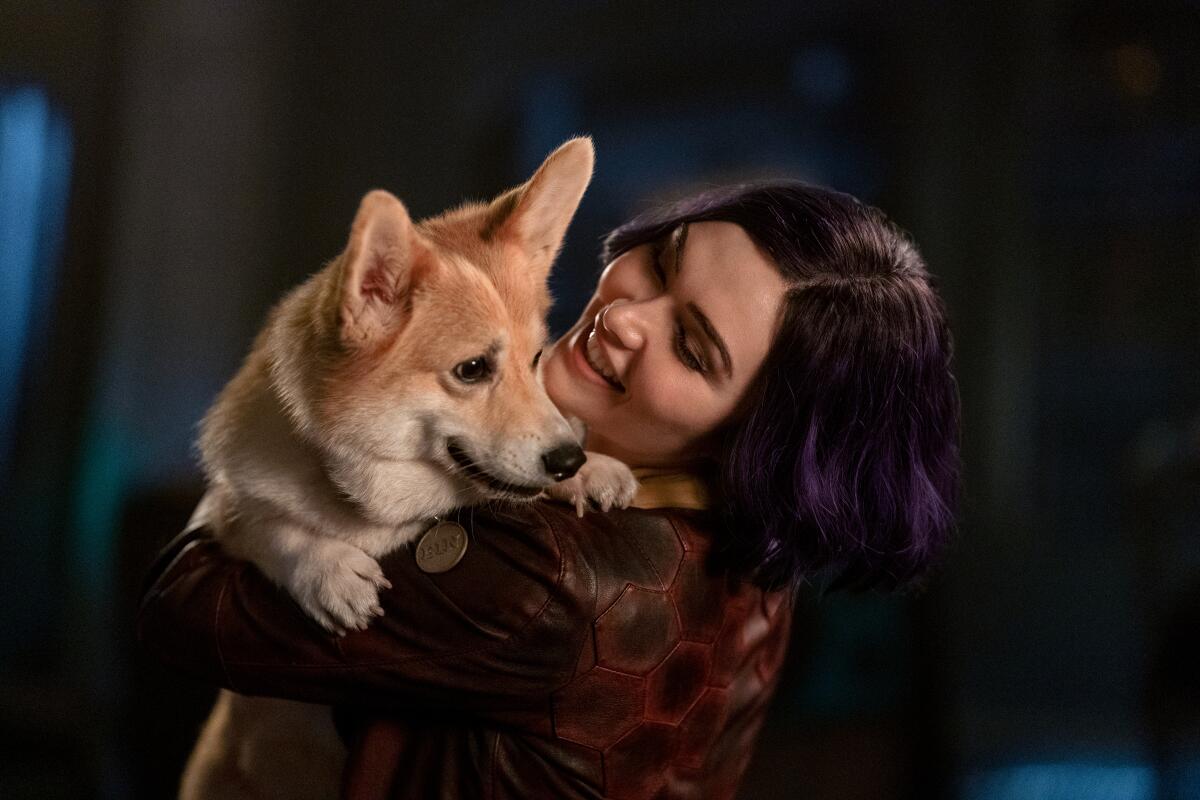
Still, an adaptation can be a tricky endeavor, and Hollywood’s abysmal track record of adapting Japanese animation — see “Ghost in the Shell” (2017), “Death Note” (2017), “Dragonball Evolution” (2009), or even the anime-influenced “The Last Airbender” (2010) — has left anime fans understandably wary about any new attempts.
But “Cowboy Bebop” is the rare live-action adaptation that manages to balance its reverence for the original series with divergent narrative elements that serve more modern storytelling. The spirit of the anime lives on in the essence of the characters, as well as the show’s stylish retro-futuristic world and impeccable soundtrack. Sometimes an anime’s story is best told in the anime, so an adaptation doesn’t need to be a carbon copy.
Part of the fun in making an adaptation “is getting to spin the story in a different direction,” said Nemec. “Being able to take the narrative someplace that the audience doesn’t imagine is coming. If fans of the show could turn on an episode and know what the ending is, that’s no fun. And as a fan, that’s not exactly what I would want to watch.”
‘Cowboy Bebop’
Where: Netflix
When: Any time, starting Friday
More to Read
The complete guide to home viewing
Get Screen Gab for everything about the TV shows and streaming movies everyone’s talking about.
You may occasionally receive promotional content from the Los Angeles Times.
